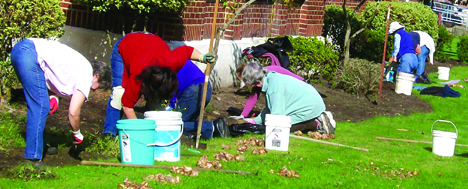Veterans Day reminder: Military service and social security
 Each year, on Nov. 11, America observes Veterans Day and honors the men and women who have served in our nation’s Armed Forces. Many of our Vietnam era veterans are now nearing retirement age, or already there. It is important that they — and other American service personnel — know just what retirement benefits they can count on from Social Security as they make their future financial plans.
Each year, on Nov. 11, America observes Veterans Day and honors the men and women who have served in our nation’s Armed Forces. Many of our Vietnam era veterans are now nearing retirement age, or already there. It is important that they — and other American service personnel — know just what retirement benefits they can count on from Social Security as they make their future financial plans.
Like most of the civilian workforce, all current military personnel pay Social Security taxes and earn Social Security coverage. Earnings for active duty military service or active duty training have been covered under Social Security since 1957. Also, earnings for inactive duty service in the reserves (such as weekend drills) have had Social Security coverage since 1988.
In addition to regular military pay, Social Security adds special earnings credits to an individual’s Social Security record when he or she serves in the military. The extra earnings are for periods of active duty or active duty training. If, for example, a person served in the military between 1957 and 1977, he or she has been credited with $300 in additional earnings for each calendar quarter in which active duty basic pay was earned. These extra earnings may help someone qualify for Social Security or increase the amount of the Social Security benefit.
The number of credits an individual needs to qualify for Social Security depends on his or her age and the type of benefit. Any future Social Security benefit payment depends on a person’s earnings, averaged over a working lifetime. Generally, the higher a person’s earnings, the higher his or her Social Security benefit will be.
And remember that Social Security is more than retirement. If a worker becomes disabled before reaching retirement age, he or she may be eligible for Social Security disability benefits. A disabled worker’s spouse and dependent children also may be eligible for benefits. If a worker dies, the widow or widower and dependent children may be eligible for Social Security survivors benefits.
If you, or someone you know, were wounded while on active duty in the military, find out more about what Social Security can do by visiting our website designed specifically for wounded warriors: www.socialsecurity.gov/woundedwarriors. There, you will find answers to a number of commonly asked questions, as well as other useful information about disability benefits and Supplemental Security Income (SSI).
Veterans and others who are within 10 years of retirement age should begin planning for retirement. A good place to start is with Social Security’s Retirement Estimator at www.socialsecurity.gov/estimator.
For more information, you can read our fact sheet, Military Service and Social Security, which is available on our website at www.socialsecurity.gov/pubs/10017.html.

